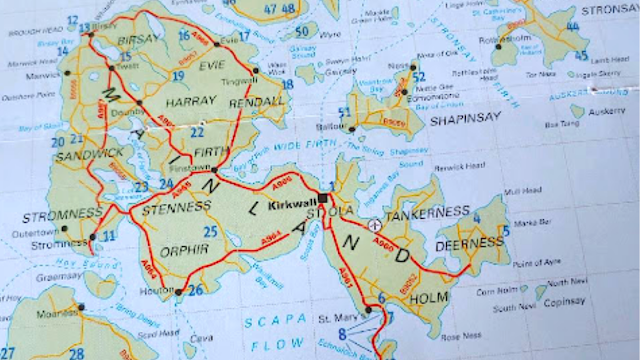MONTANA and GLACIER NATIONAL PARK
Montana is a very interesting State, called “Big Sky Country”. It is the 4th State in the US in size after Alaska, Texas and California. There is plenty of space to roam around with five people per square mile.
The Continental Divide is to the West with the Triple Divide Peak (8,025 feet) found in Glacier National Park. To the East, you find fertile plains allowing crops and cattle.
The first cattle ranch was started in 1833 and rodeos are a part of the State entertainments. After the Civil War, ranchers grew and cattle drives were seen every year, travelling for weeks at the speed of 10 miles a day.
Montana weather has warm and clear summer months with cold and snowy winters.
HISTORY of the STATE.
In the 18th century, French trappers came and traded their furs with the Indians.
In 1803 with the Louisiana Purchase, East Montana became a US Territory.
From 1804 to 1806, Lewis and Clark were sent by President Jefferson to discover the West and find a route to the Pacific Ocean. It took a year of preparations. Captain Lewis was Jefferson ‘s personal secretary and he asked a friend and former Army colleague, William Clarke, to come with him. They recruited Army soldiers to the Corps of Discovery roster. The interpreter was Toussaint Charbonneau, a former French-Canadian trapper with his Indian wife, Sacagawea. She became very useful to deal with different tribes they met. On one occasion she met her brother and his tribe. The result was that he sold horses to the expedition at a time they needed them badly.
Boats of different sizes, food, weapons, gifts for the Indians, clothes, medicines, paper for journals writing and building tools were packed. The expedition left St Louis MO on May 14, 1804.
Then, after several months, they reached the State of Montana.
Along the Missouri River, they were very impressed by rock formations they called “the Gates of the Mountains”. They brought back numerous information about the West, which will help the future pioneers and new citizens of the country.
As Montana grew, Catholic missionaries arrived from Europe and opened churches and schools to take care of mainly Indian children but also children of the farmers and town people. Father De Smet was a well-respected priest, asked to preside a peace council on July 2, 1868, in Missouri with 50,000 Indians and 3 Generals. Mother Amadeus, called “The Great Holy White Chief Woman” by the Cheyenne, founded missions’ schools all over Montana.
In 1862 and 1877, gold was discovered in Montana and prospectors arrived… Towns started and between 1880 and 1883…. The Northern Pacific Railroad crossed Montana.
The State of Montana is also famous for the artists who came to live there, giving us the opportunity to discover the past. They describe in their works the customs of years past, and the clothes our ancestors wear for work or festivals.
Charles Russell (1864-1926) lived in Great Falls, MT where he built his house and atelier in 1900. He was a painter and a sculptor of cowboys, Indians and scenes of the American West.
Two other artists of the 19th century West were Frederic Remington (1861-1909) and Fritz Winhold Reiss (1886-1953). Reiss settled in the Blackfeet Reservation in Browning MT, until he moved to New York City.
The town of Great Falls has beautiful great falls which are impressive.
Montana is home to 12 American Indian Nations. Studying their traditions, ceremonies and rituals, which go back in time, is fascinating. Dances are still performed during Festivals.
In the modern time we must not forget an American actor, Gary Cooper, born in Helena MT in 1901. He made more than 90 films and won Oscars for his performances in “Sergeant York” and “High Noon”. He died in 1961 in Los Angeles.
GLACIER NATIONAL PARK
This park, called “The Crown of the Continent “lies at the border of Canada and was created in 1910 by President Taft. In 1932, it was joined to Waterton Lakes Park (in Canada) forming “The International Peace Park”. It is situated on the Continental Divide, its West with more rain and its Eastern part colder and windy. When You visit, you can enjoy several lakes. I like St Mary’s Lake the best.
Two alpine glaciers meet at the top of the divide, each going in separate direction, one toward St Mary’s Lake, the other toward Mc Donald Creek Valley. This is Logan Pass at 6,600 feet. We were lucky to reach Logan Pass on June 1st… and found the snow ploughed.
There is only one paved road, a 50-mile-long highway, called “Going to the Sun Road”. It was dedicated in 1933 and crosses over the Logan Pass.
Forests cover 2/3 of the park with ponderosa pines, spruce and aspen. Many animals roam free. Glacier is grizzly country. They have a hump on their back, weigh until 800 lbs. and can reach 5 to 8 feet. They eat other animals, but like fish, nuts, berries and roots. They also enjoy the bulbs of the glacier lilies, first to bloom in late spring.
You can meet Black bears, big horn sheep, moose, elks, mountain lions, mountain goats, with their 7 “coat to keep them warm, but shed in every summer. Gray wolves have returned to Glacier in 1986 and their packs are now found in large number. Small animals enjoy this great park, badgers, porcupines, river otters, marmots and snowshoes hares (which coat changes to brown in summer).
Park regulations protect the visitors as well as the animals. It is a great place to visit, easier in summer, entering the Park after passing the towns of Kalispel and Whitefish, MT.






















Comments
Post a Comment